Growing Pains in Washington D.C.
by Elisabeth Herschbach
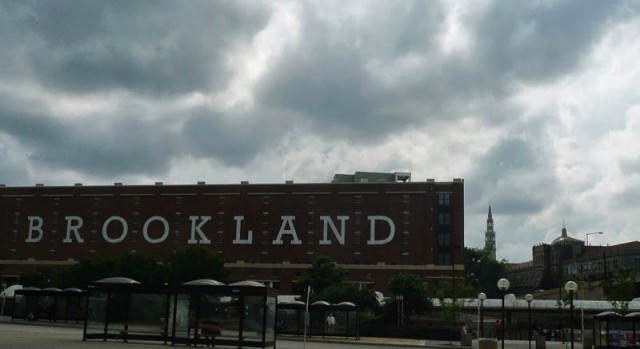
With its shady, tree-lined streets and preponderance of single-family homes, my neighborhood in Northeast D.C. has a quiet, small-town vibe, even though it’s minutes from downtown. Brookland has big yards and open spaces, wide streets and wood-frame houses, but not much in the way of shopping or dining or big city amenities. Its commercial district is a two-block strip with a handful of take-out joints and restaurants, a couple of coffee shops, a hardware store, and an assortment of other small businesses. Its residents are mostly old-timers who have lived here for generations or young families drawn to its relative affordability.
That’s about to change, though, now that developers have apparently decided that Brookland is the hottest real estate market in town. Backhoes and cranes have become routine features of the landscape, and the walk to my son’s weekly music class is an obstacle course through a multi-block construction zone of bulldozed sidewalks and orange construction cones.
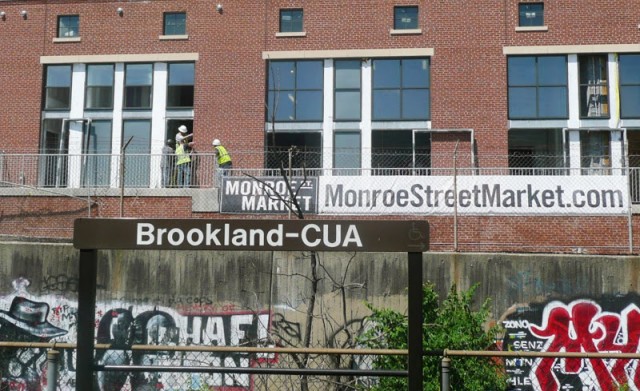
Across from the metro station, in what used to be a mostly empty five-block stretch on the edge of the Catholic University campus, an ambitious one-million-square-foot complex of stores, restaurants, and hip luxury lofts is taking shape. In March, a beloved neighborhood tavern, Colonel Brooks, was demolished to make way for still more luxury apartments and retail space — a five-story, block-wide development that incited bitter opposition from some residents, who argued that the scale of the project was too big for the site. Meanwhile, just down the street, 237 brand new cookie-cutter townhouses have sprung up on a 10-acre plot of land, with price tags well above the neighborhood’s current median house sale prices.
The building frenzy in Brookland mirrors a larger trend that has been unfolding across D.C. over the last 15 years, as entire neighborhoods have been transformed by massive development and revitalization projects, in some cases seemingly overnight. The U Street Corridor, for example, once a crime-ridden stretch of blighted buildings and crack houses, is now a trendy nightlife destination crammed with upscale restaurants, clubs, cafes, boutiques, and galleries. Columbia Heights — just a few years ago still littered with vacant lots and abandoned storefronts — is now almost unrecognizable after a rush of construction brought in a big box mall, several high-rise apartment buildings, and more than three dozen new restaurants and businesses.
The turnaround has been dramatic. From a neglected town suffering from a shrinking population and stagnating economy — a town still scarred from the 1968 riots that decimated much of the city after Martin Luther King’s assassination — D.C. has morphed into one of the fastest growing urban centers in the nation, attracting a steady influx of young, affluent, college-educated professionals pumping their tax dollars and disposable income into the city coffers.
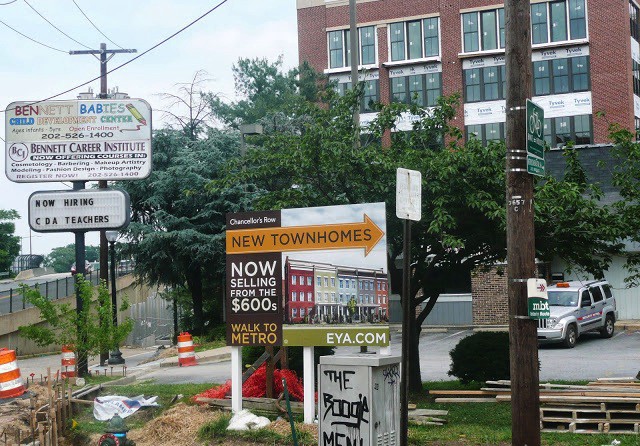
Yet there is something unsettling about the sheer pace of the change, about the way you can practically see the process of gentrification unfold before your very eyes, like a giant wave washing over the city, neighborhood by neighborhood, bringing in its wake a seemingly unending tide of shiny new shopping centers, chic cafes, upscale apartments, gourmet markets, fancy gyms, dog parks, bike lanes, and other yuppie amenities — not to mention surging house prices and rapidly shifting demographics.
Given D.C.’s longstanding heritage as a predominantly African-American city, a particularly potent symbol of the sea change is its shrinking black majority. While blacks made up 71 percent of Washington’s population in 1970 and 60 percent in 2000, the city’s black population now barely hovers above the 50 percent mark. It’s a familiar story of economic displacement: as the cost of living spikes, poorer residents get priced out. While black residents are not the only ones affected, it’s a problem drawn most starkly along color lines because of the way that race and class intersect.
Meanwhile, as D.C. as a whole becomes wealthier and whiter, it has also become more divided. Washington now has one of the highest percentages in the nation of 25-to-35-year-olds earning over $100,000 a year. At the same time, however, it also suffers from a poverty rate four times the U.S. average and one of the highest levels of income inequality in the nation. Ritzy Georgetown has a median household income of $116,000; east of the Anacostia River in Congress Heights, the median income is $32,348. Citywide, the median white household income is $99,401; for blacks it is $36,948.
I’m not against development, by any means. Clearly, coffee houses and dog parks are better than crack houses and vacant lots. Without a doubt, D.C. as a whole is much safer and more livable than it was in the ’80s and early ’90s, thanks to the flood of building projects and investment dollars. Here in Brookland, too, I’m well aware of the potential benefits that the bulldozers and excavators promise to bring. It would be nice to have more shops in walking distance and a few more places to grab a bite to eat. I would welcome a little more bustle in a neighborhood that, quite frankly, can seem a little too sluggish for my tastes, and with more pedestrians out and about, I’d feel safer making my way home from the metro at night.
Nonetheless, it’s hard not to regret the casualties of change: the longtime residents displaced by rising costs, the small homegrown businesses pushed out when big-name retailers drive up commercial rents, the lost traces of a community’s roots. Surely it should be possible to revitalize neighborhoods without squeezing out everyone who can’t afford half-a-million-dollar-plus homes; making neighborhoods more “livable” doesn’t have to mean sending the cost of living through the roof. Just how many high-end condos and luxury lofts could one city possibly need anyway?
Back in my own one-bedroom apartment — decidedly less than upscale with its cinderblock walls and speckled, office-style carpeting — I browse through ads for the new luxury townhouses that have just sprung up in my neighborhood. A young woman beams enthusiastically over her take-out caramel macchiato as she strolls home; a father and daughter laugh together as they step onto the tidy brick pathway to their house, toting groceries and a bouquet of flowers; a fashionably dressed couple hold hands, clutching shopping bags.
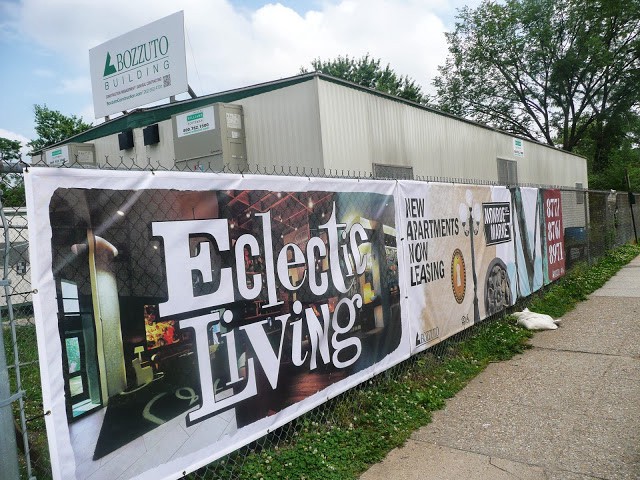
The ads are meant to convey a feeling of neighborhoodliness, a sense that the area is vibrant and thriving and lived-in. Yet there is a bland sterility to the images, a certain homogenized aesthetic of affluence. Everyone in the ads is young, attractive, stylish; everyone is holding some symbol of their purchasing power: groceries, shopping bag, coffee, flowers. The images remind me of the stereotypes of suburbia: the shiny uniformity, the insularity, the sanitized streetscapes — ironically, the very features that many people are trying to escape when they move from subdivisions to cities in the first place.
Some months ago, my family and I stopped into Colonel Brooks for one last visit before the little tavern, a neighborhood fixture for 32 years, closed its doors for demolition in preparation for the new $50 million-plus development project that will soon rise in its stead. As usual, the place was crammed with an eclectic mix of people: college students and professors, priests and preschool teachers, plumbers and federal employees, cashiers and artists, retirees and young couples with toddlers — people of all ages, races, income levels, and backgrounds, representing the full cross-section of Brookland residents. More than retail opportunities, more than property values and median incomes, that kind of diversity seems to me to be the real measure of how a neighborhood is thriving. Yet that mix and diversity — the lifeline of cities — is exactly what gets squeezed out when neighborhoods turn into sterile bubbles of affluence.
Realistically, Brookland is unlikely to become the next Columbia Heights or U Street. So far, construction has been limited to predominantly unused space by the metro, and the rest of the neighborhood is too spread out to allow for the density of development that has radically transformed other neighborhoods. Moreover, unlike downtown areas that were still badly damaged from the 1968 riots when developers moved in, Brookland isn’t ridden with boarded-up buildings and abandoned, decaying lots. Hence, there’s no pretext for the sort of massive reconstruction that wiped out all traces of the past in places like Chinatown — where the streets are now lined with the same national chains you might see in any suburban shopping mall and few vestiges of the neighborhood’s heritage remain other than the Chinese names incongruously posted on storefronts.
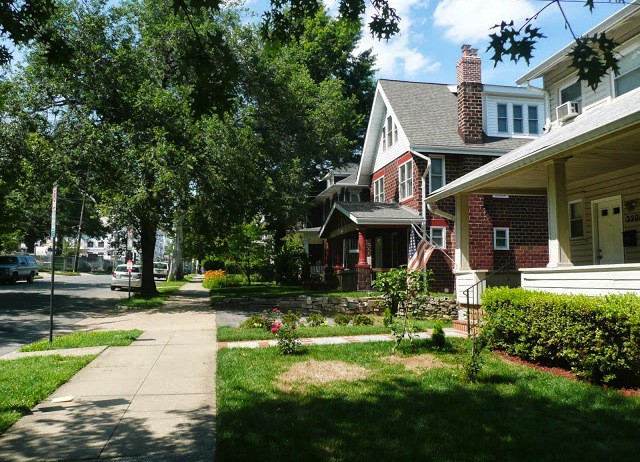
It’s too soon to tell exactly how things will pan out in Brookland. However, judging by the price tags showing up on the newest real estate developments — $600,000-plus to buy a townhouse, for example; $1,800 a month to rent a studio — one thing is looking pretty certain: My family and I probably won’t be here to experience the results. Our son is getting older; eventually we’re going to need more space and a place of our own.
When we first moved to Brookland three years ago, buying a place here might have been within our reach. After all, up to now, the relative lack of commercial development has been what has kept the neighborhood affordable. Now that’s changing, though, and all too soon Brookland, like so many other neighborhoods in D.C., will be out of our range.
Elisabeth Herschbach lives in D.C. and works as a copy editor, ESL teacher, and freelance translator. Her translation of the 1938 novel Eroica by Greek writer Kosmas Politis was published in 2012.
Support The Billfold
The Billfold continues to exist thanks to support from our readers. Help us continue to do our work by making a monthly pledge on Patreon or a one-time-only contribution through PayPal.
Comments